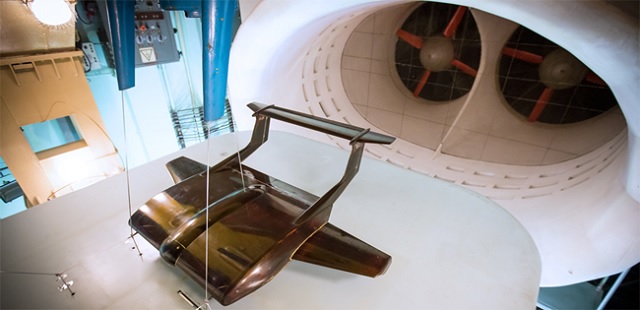Russian researchers are analysing the potential of a heavy freighter design which would rely on ground-effect lift.
The aircraft would feature a cargo compartment which would act as a wing, with a capacity for 500t of freight in standardised containers.
This arrangement would ensure “optimal use” of the internal volume, says the Moscow-based Central Aerohydrodynamic Institute, and increase the efficiency.
The institute has conducted subsonic windtunnel testing of the four-engined design, which includes a twin vertical stabiliser and a liquefied natural gas fuel tank in the central fuselage.
While the aircraft would use conventional runways, most of its flight would take place just 3-12m (10-40ft) above terrain, water or ice by taking advantage of ground-effect forces.
These forces include a combined reduction of drag and increased lift resulting from a wing’s creating a cushion of air, and disrupting vortices, when close to the ground.
Freight would be loaded through the front of the wing, says the institute, which has assessed cruising and landing configurations of the design.
It says that the modelling indicates the aircraft could conduct “sustained and controlled” flight, with the ground effect helping to reduce fuel consumption and increase range.
Analysis of the aircraft design echoes previous Soviet-era experimentation with a variety of ground-effect 'ekranoplan' vehicles including the huge craft – the Alexeyev KM – tested on the Caspian Sea in the 1960s.

Source: Cirium Dashboard



















